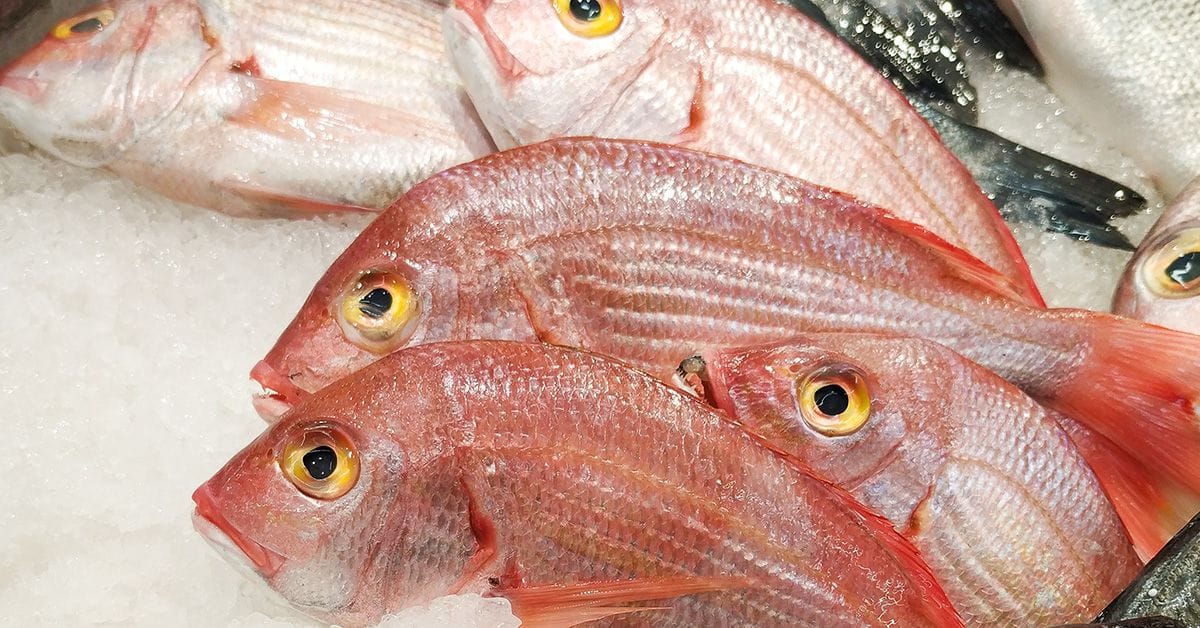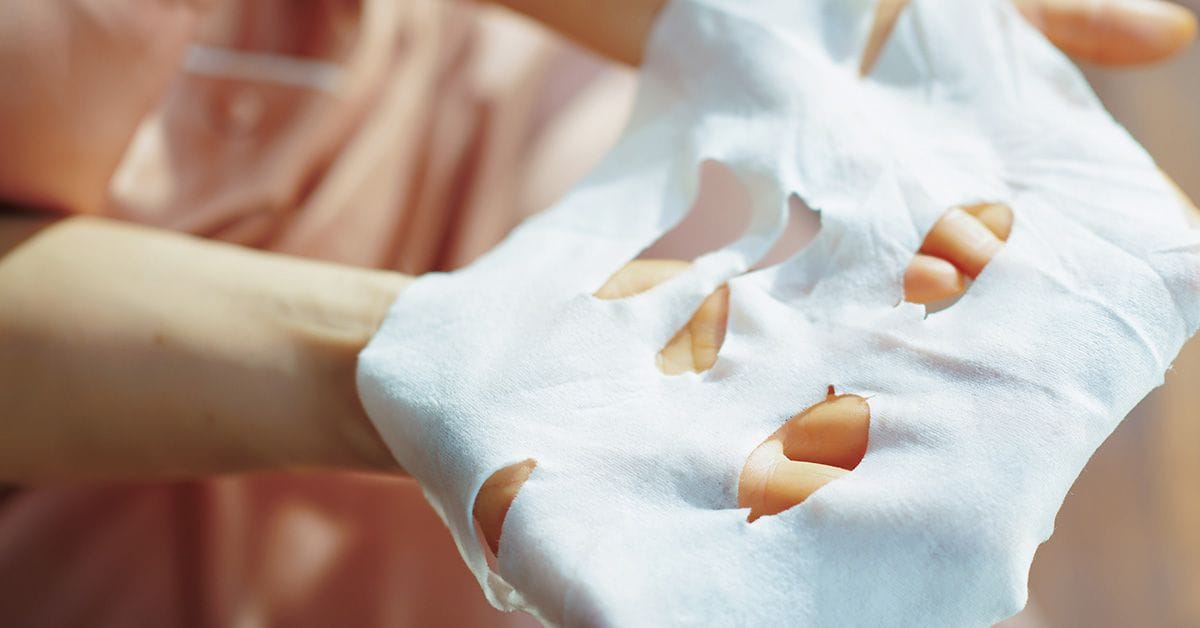How far would you go for that perfect glow? New research unmasks the cosmetic potential of metabolites from two novel bacteria residing in seabream guts.

The skincare industry has found uses for some pretty strange ingredients. Your facial routine might already be harnessing snail slime—used for its moisturizing and antioxidant properties—and that favorite red lipstick could get its color from crushed beetle shells. Products have also been known to contain placenta, bee venom, and various avian fluids, among other unconventional animal ingredients that many consumers swear by. With this in mind, researchers working at Sungkyunkwan University in the Republic of Korea have perhaps not gone too far out on a limb in investigating possible uses for compounds derived from some bacteria that live in fish guts.

Collagenase and Tyrosinase Inhibitory Compounds from Fish Gut Bacteria Ruegeria atlantica and Pseudoalteromonas neustonica
DOI: 10.1021/acsomega.3c09585
Seabream is a popular farmed fish, with over 95% of production coming from aquaculture.1 Typically sold in fillets, it generates a large volume of waste and may be a source of interesting byproducts. Two novel bacteria were isolated from the guts of various seabream species: a Ruegeria atlantica strain in 1992 and Pseudoalteromonas neustonica in 2016.2,3 But to date, no research has been done into their metabolites or their possible pharmaceutical or cosmetic uses. However, what we do know is that the sea exerts a different set of selective pressures than terrestrial environments, resulting in unique structures and biological activities.4
The new work, published in ACS Omega, describes how 22 compounds were isolated from these two bacteria and their chemical structures elucidated using spectroscopic and spectrometric data analysis alongside chemical synthesis.5 The authors also looked specifically at the collagenase- and tyrosinase-inhibitory activities to see if any of the metabolites could act as functional cosmetic ingredients. These are key components in skincare products: tyrosinase is involved in melanin production, causing hyperpigmentation in aging skin,6 and collagenase breaks down the structural protein collagen—a major factor in the loss of skin elasticity and reduced skin thickness, which ultimately leads to wrinkles.7 Of the compounds tested, one showed strong collagenase inhibitory activity and another a mild tyrosinase inhibitory effect—but the team were particularly interested in a third compound, which exhibited both types. This compound was also found to be stable when exposed to heat and UV light for up to six days, suggesting it could be developed into a cosmeceutical with anti-aging effects. Additionally, there was no cytotoxicity, suggesting it may be considered safe for applications on human skin.
Further Explorations in Bacteria (and Fish) in ACS Journals
Novel compounds from bacteria have been put to a few other good uses recently, including the discovery and biosynthesis of imidazolium antibiotics from the probiotic Bacillus licheniformis.8 These are based on bacillimidazole G, a novel antibacterial metabolite that shows activity against pathogenic Gram-positive and -negative bacteria, including methicillin-resistant Staphylococcus aureus (MRSA). With antibiotic resistance tagged as one of the world’s most urgent public health problems, novel antibiotics are much needed, and small molecules derived from natural products are proving a good source. In fact, natural products have long been important sources of new drugs. Of the 1,881 drugs approved by the FDA between 1981 and 2019, 49% were either natural products or their derivatives,9 highlighting the utility of looking to unique species and metabolites for anything that we might put to an alternative use.
Let’s swim back to fish products though. Fish gelatin has also been getting a makeover, with reinforced versions being tested for intelligent wearables.10 This is of particular interest since gelatin extracted from mammal skin and bones has been linked to several diseases, not least bovine spongiform encephalopathy—more familiarly known as mad cow disease. Fish gelatin therefore looks like a more attractive alternative, and one that can be easily obtained from inedible waste material generated by fish farming. A membrane made from a nanofibrous membrane of fish-scale collagen and chitosan has also attracted attention for tissue regeneration, specifically in the field of periodontal repair.11

A Dry Sheet Mask that Loves Your Skin (And the Planet)
References
- Zoli, M. et al. Life cycle assessment of seabass and seabream production in the Mediterranean area: A critical review. Aquaculture 2023, 573, 739580.
- Rüger H-J, Höfle MG. Marine star-shaped-aggregate-forming bacteria: Agrobacterium atlanticum sp. nov.; Agrobacterium meteori sp. nov.; Agrobacterium ferrugineum sp. nov., nom. rev.; Agrobacterium gelatinovorum sp. nov., nom. rev.; and Agrobacterium stellulatum sp. nov., nom. rev. Int. J. Syst. Evol. Microbiol. 1992, 42 (1), 133–143.
- Hwang, C.Y. et al. Pseudoalteromonas neustonica sp. nov., Isolated from the Sea Surface Microlayer of the Ross Sea (Antarctica), and Emended Description of the Genus Pseudoalteromonas. Int. J. Syst. Evol. Microbiol. 2016, 66 (9), 3377–3382.
- Ding, J. et al. Application of Marine Microbial Natural Products in Cosmetics. Front. Microbiol. 2023, 13.
- Kim, J. et al. Collagenase and Tyrosinase Inhibitory Compounds from Fish Gut Bacteria Ruegeria atlantica and Pseudoalteromonas neustonica. ACS Omega 2024, 9, 32, 34259–34267.
- Costin, G.-E. and Hearing, V.J. Human Skin Pigmentation: Melanocytes Modulate Skin Color in Response to Stress. Faseb J. 2007, 21 (4), 976–994.
- Cruz, A.M. et al. In Vitro Models for Anti-Aging Efficacy Assessment: A Critical Update in Dermocosmetic Research. Cosmetics 2023, 10, 66.
- Ham, S.L. et al. Discovery and Biosynthesis of Imidazolium Antibiotics from the Probiotic Bacillus licheniformis. J. Nat. Prod. 2023, 86, 4, 850–859.
- Newman, D.J. and Cragg, G.M. Natural Products as Sources of New Drugs Over the Nearly Four Decades from 01/1981 to 09/2019. J. Nat. Prod. 2020, 83 (3), 770–803.
- Mustakim, S. et al. Fish Gelatin Reinforced with Carbon Nanotubes and ZnO Nanorods for Wearable Smart Technologies. ACS Appl. Nano Mater. 2024, 7, 5, 5202–5213.
- Li, M. et al. Biomimetic Mineralized Hydroxyapatite–Fish-Scale Collagen/Chitosan Nanofibrous Membranes Promote Osteogenesis for Periodontal Tissue Regeneration. ACS Biomater. Sci. Eng. 2024, 10, 8, 5108–5121.
